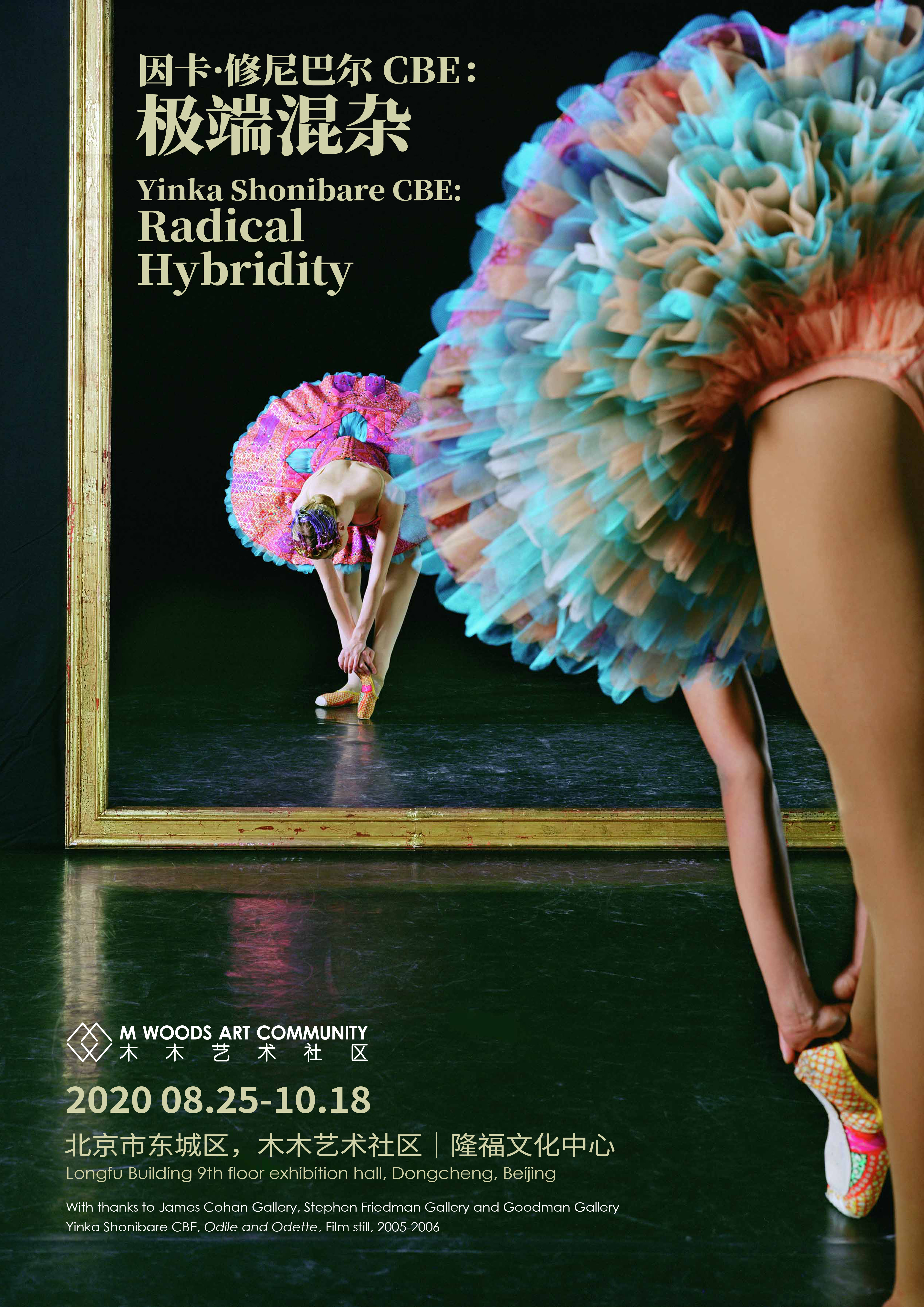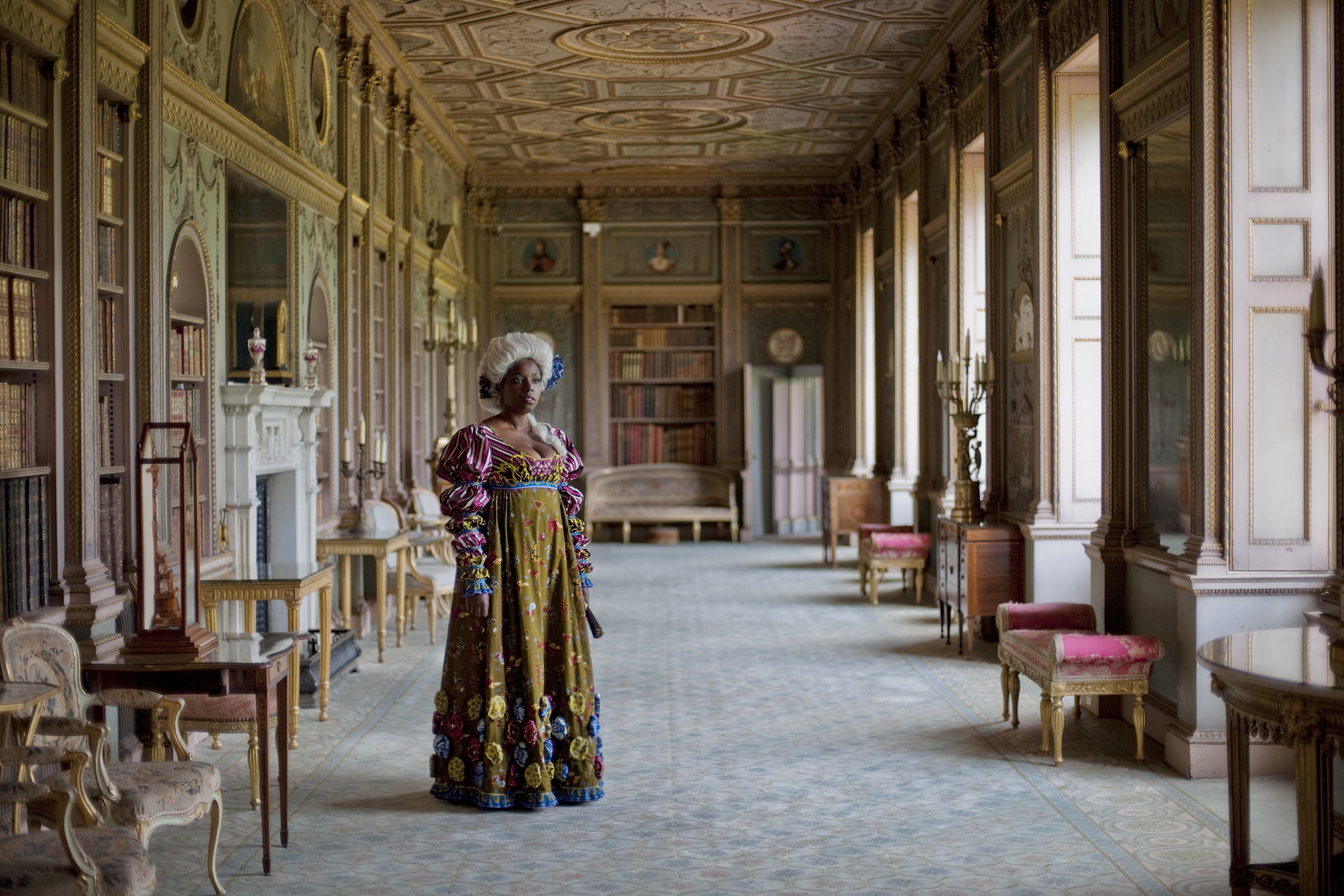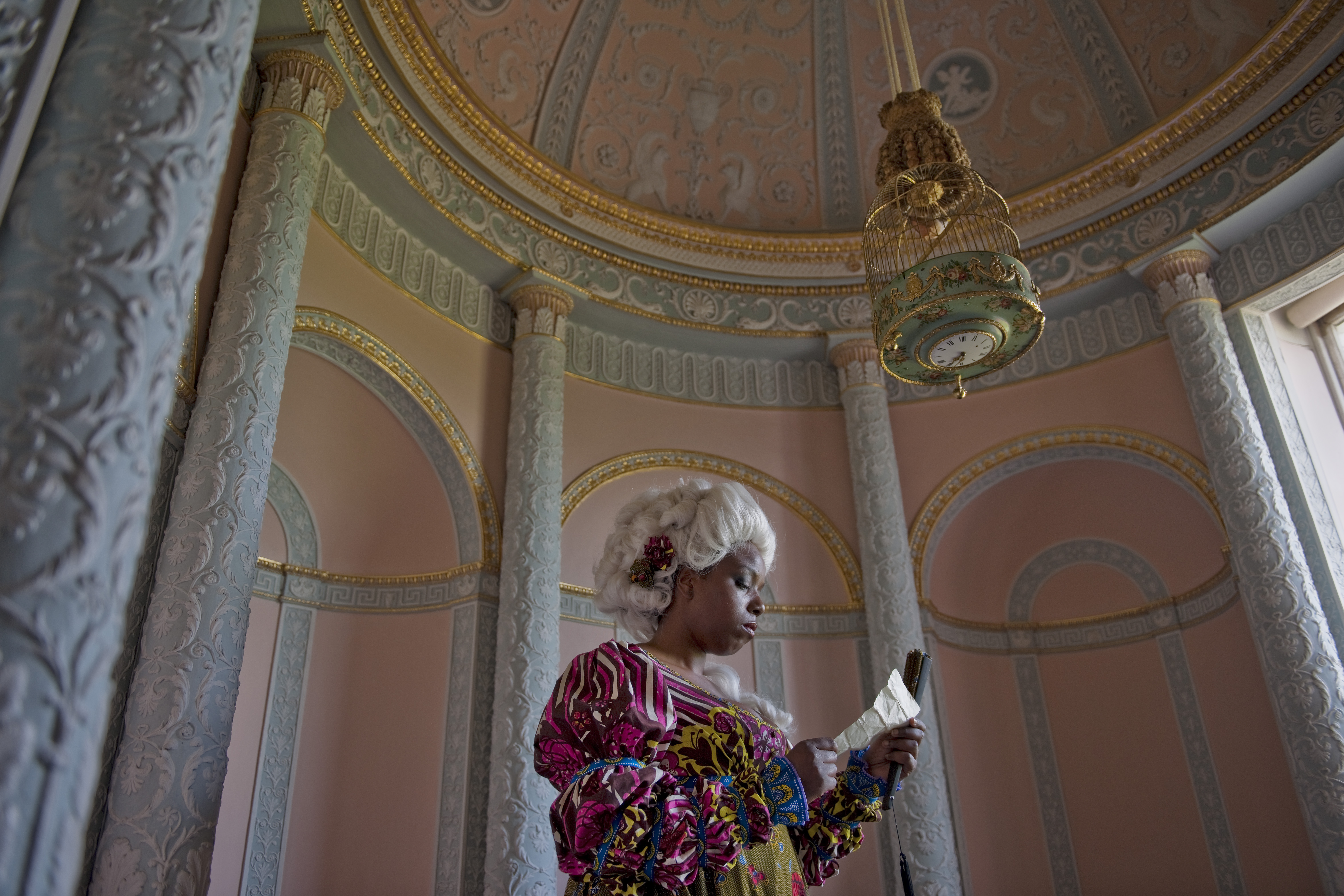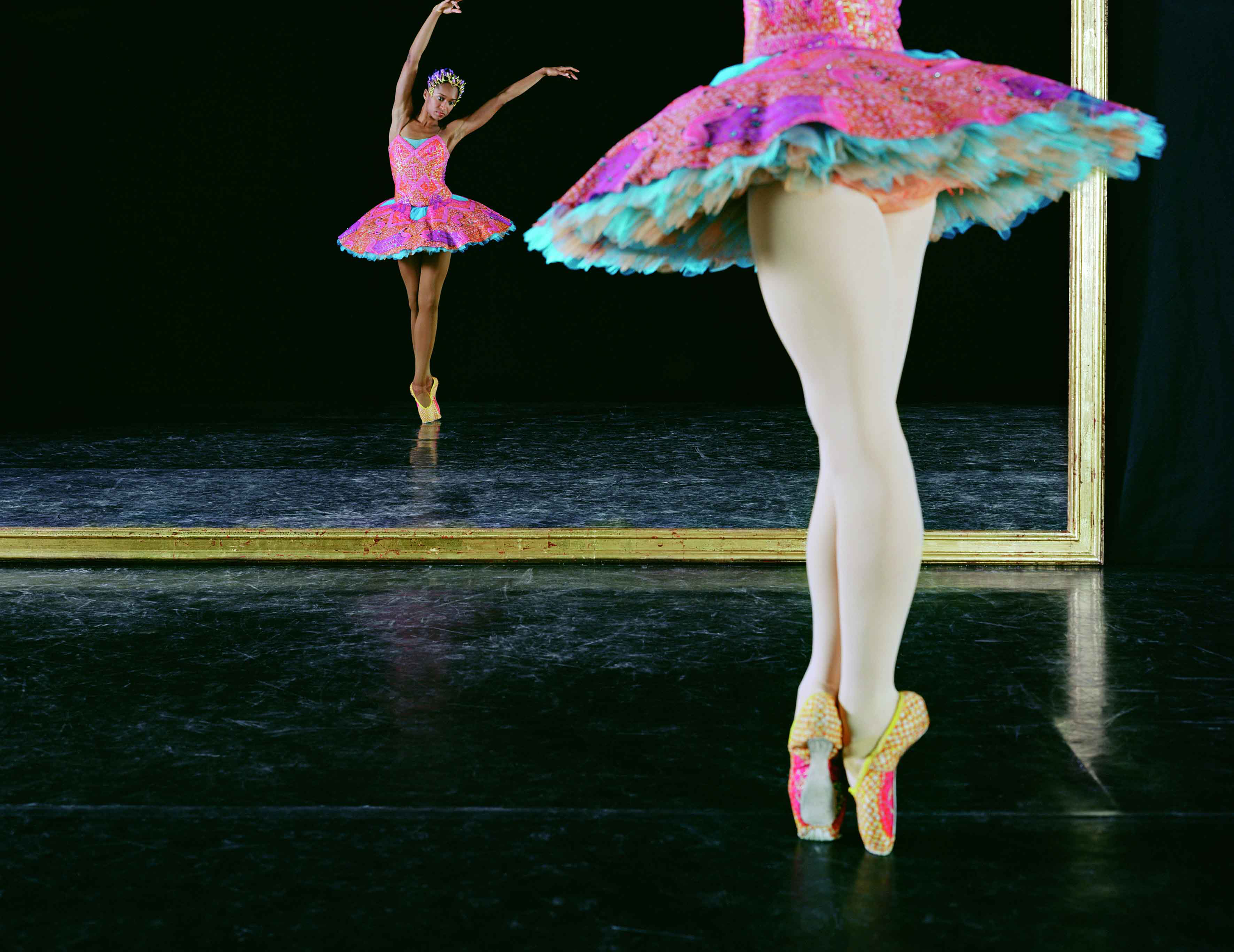
Yinka Shonibare CBE: Radical Hybridity
Curated by Victor Wang
25 August – 22 September 2020
M WOODS, Longfu Building: Temple Galleries, 9th
Floor, Beijing
Opening: 25 August

Yinka Shonibare CBE,‘Addio del Passato’, 2011, 16:52 min, Digital video, colour and sound,Courtesy the artist, James Cohan Gallery, New York, Stephen Friedman Gallery, London and Goodman Gallery, South Africa
M WOODS is proud to première two film works in our Temple Galleries by the influential British-born Nigerian artist Yinka Shonibare CBE (b. 1962).
Yinka Shonibare CBE, who was awarded the CBE (Commander of the Most Excellent Order of the British Empire) in 2019, has spent three decades exploring the European colonial impact on African identities and their diasporas. Rather than taking a fixed position on visual identity and cultural representation, Shonibare CBE opens up a space of cultural hybridity and duality in his practice.
The films are shown within the museum’s specially reconstructed Ming dynasty temples that were originally built on the museum’s current site in 1452 by the Jingtai Emperor of the Ming dynasty. These temples were the only ones in the city to accommodate both lamas and monks.
Visitors are invited to view Shonibare CBE’s films Odile and Odette (2005) and Addio del Passato (2011) within this unique setting and context of the rebuilt temples, thus combining tradition, Chinese history and contemporary art. The period during which the temples were built was also itself a significant one in terms of cultural migration and cross-pollination in a Chinese context.
This première also marks the first project in a new series of programming and initiatives at M WOODS that will reconsider aspects of post-colonial theory, diasporic knowledge and Black intellectual thought in the context of China and East Asia.
 M WOODS Art Community: Longfu Building, Temple Gallery, Beijing.
M WOODS Art Community: Longfu Building, Temple Gallery, Beijing.“I’m delighted that M WOODS have chosen to show my films at this prescient time”. Says artist Yinka Shonibare CBE. “This will be the first significant presentation of my films in China, in such a unique setting and I’m happy to contribute to the wider important conversations on post-colonial affects and diasporic influence within this context.” (Yinka Shonibare CBE)
 Photo credit: Yinka Shonibare CBE, 2014, Photo: RA Marcus Leith, courtesy the Artist.
Photo credit: Yinka Shonibare CBE, 2014, Photo: RA Marcus Leith, courtesy the Artist.About the Artist:
Yinka Shonibare CBE
Yinka Shonibare CBE (b. London, UK, 1962 -) studied Fine Art at Byam Shaw School of Art (1989) and received his MFA from Goldsmiths College, London, (1991).
His interdisciplinary practice uses citations of Western art history and literature to question the validity of contemporary cultural and national identities within the context of globalization. Through examining race, class and the construction of cultural identity, his works comment on the tangled interrelationship between Africa and Europe, and their respective economic and political histories.
In 2004, he was nominated for the Turner Prize and in 2008, his mid-career survey began at Museum of Contemporary Art, Sydney; touring to the Brooklyn Museum, New York and the Museum of African Art at the Smithsonian Institute, Washington D.C. In 2010, his first public art commission Nelson’s Ship in a Bottle was displayed on the Fourth Plinth in Trafalgar Square, London, and was acquired by the National Maritime Museum, Greenwich, London.
In 2013, he was elected as a Royal Academician and was awarded the honour of ‘Commander of the Order of the British Empire’ in the 2019 New Year’s Honours List. His installation ‘The British Library’ was acquired by Tate in 2019 and is currently on display at Tate Modern, London.
His work is included in notable museum collections including Tate, London; the National Museum of African Art, Smithsonian Institute, Washington D.C.; Museum of Modern Art, New York; Guggenheim Abu Dhabi; Moderna Museet, Stockholm and the Museum of Contemporary Art, Chicago.

Yinka Shonibare CBE,‘Addio del Passato’, 2011, 16:52 min, Digital video, colour and sound,Courtesy the artist, James Cohan Gallery, New York, Stephen Friedman Gallery, London and Goodman Gallery, South Africa
About the films:
Odile and Odette (2005-2006) is a film made in collaboration with the Royal Opera House. Here, Shonibare CBE re-imagines a classical episode from Tchaikovsky’s Ballet Swan Lake, where the lead roles 'Odile' and 'Odette' engage in a close dialogue of gestures and movement. Odile and Odette are characters which embody “good” and “evil” and are traditionally danced by a sole prima ballerina. The artist transforms this classical part into a complex and subtle interplay between two dancers in which the duality of the characters is played out in racial difference. Mirroring each other’s expression on either side of an ornate Baroque frame, Shonibare CBE suggests that their movement is both estranged and united. The dancers perform a passage from the ballet in a studio stage set to silence, the rhythm of their pointe shoes creates the only soundtrack to the film.

Yinka Shonibare CBE, Odile and Odette, 2005, Duration: 14.28 min. Digital video, colour, sound / High definition digital sound, Courtesy the artist, Stephen Friedman Gallery, London and James Cohan Gallery, New York, Commissioned by the Royal Opera House, Covent Garden, London, 2005
Filmed from one side of a “stage set” but using two cameras, the doubling effect is further played out as the dancers switch side of the mirror frame and creates a visual environment where the viewer is privileged to see the work performed from both sides of the 'mirror'. The film's narrative and construction suggest that both characters are one and that their complex relationship is both co-dependent and formed by each other.
In a recent interview Shonibare CBE said: “What I find interesting is the idea that you cannot define Africa without Europe. The idea that there is some kind of dichotomy between Africa and Europe - between the ‘exotic other’ and the ‘civilized European’, if you like - I think is completely simplistic. I am interested in exploring the mythology of these two so-called separate spheres, and in creating an overlap of identities.”
Addio del Passato (2011) is the title of an aria about betrayal, love and loss from Verdi’s opera La Traviata, sung by the dying heroine Violetta. In this film Shonibare CBE alters the characters so the aria is performed by a black singer in the guise of Frances Nisbet, the wife who Nelson betrayed and abandoned during a lengthy affair with Lady Hamilton. Here Nisbet agonizes over her own life and Nelson’s absence, even envisaging his death in a series of tableaux (the Fake Death Pictures) that occur outside the immediate action of the film, as though giving form to her tortured thoughts and daydreams.
Addio del Passato is Shonibare CBE’s first investigation of Nelson’s wider human story; more typically he views Nelson in a purely metaphorical sense, as a cipher for empire. As an artist he works with aesthetics, metaphor, politics; indeed, his headless and faceless figures are purposefully not “individuals” with whom we could identify as people. As such, despite its obvious artifice, the level of emotional intensity and engagement offered by Addio del Passato is unexpected, breathtaking. Like Un Ballo in Maschera (2004), this work features what at first seems to be the looping of the film. However, this is not a loop, but an actual live replaying, the singer beginning her song and her walk through the house and landscape again. In this case the repeated action implies an endless cycle of sadness and despair that amplifies the potency of feeling and sense of hopelessness. The film explores the concept of destiny as it relates to themes of desire, yearning, love, power and sexual repression.
The film was shot in the magnificent surroundings of Syon Park, just outside London, which is the ancestral home of the Duke of Northumberland. Originally built in the sixteenth century, it was extensively remodeled in the eighteenth century by two of the most renowned designers of the period to reflect contemporary fashions - Robert Adam working on the house and Capability Brown on the landscape. This location extends Shonibare CBE’s reference to the aristocracy and the trappings of wealth.
--
VICTOR WANG
All content property of © Victor Wang 2009 - 2024 All rights reserved -- BEIJING - LONDON.
All content property of © Victor Wang 2009 - 2024 All rights reserved -- BEIJING - LONDON.